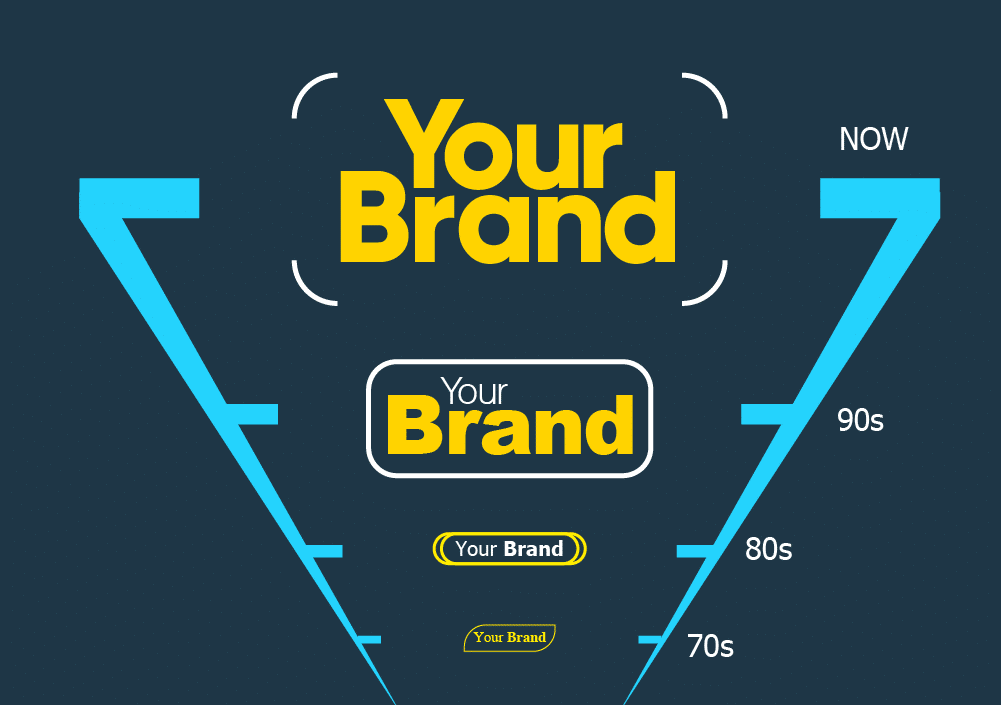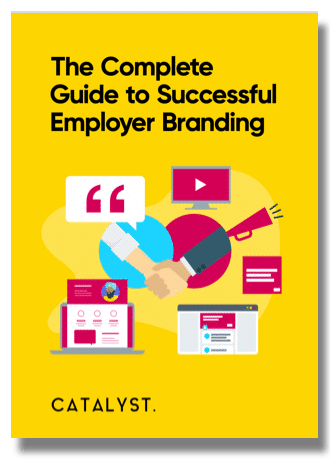Your brand says a lot about your business; it’s who you are, aesthetically and verbally crystallised.
It stands to reason, then, that getting it spot on is important for any business. However, many businesses neglect their brand, leaving it to stagnate over years or decades.
As a result, thousands of businesses around the world still operate under outdated brands, many of which haven’t been touched since the 90s or early 2000s.
Unfortunately, an outdated brand says a lot about your business. Consumers/potential customers will perceive a lack of attention to branding as a lack of development, as a business who is stuck in the past, unwilling to adjust.
A strong new brand is one of the keys to success in a rapidly changing business landscape, especially as we enter into 2024. Your target audience grows more discerning by the day; they understand the power of brand, and what your commitment to your brand means.
In this blog, we’ll run through the importance of clear and professional branding in 2024 and beyond, as well as touch on some key ways that you can improve your existing branding with a killer brand strategy.
What counts as branding?
Before we get started, it’s important to address one burning question: What actually is branding?
In a nutshell, your brand is:
- Your logo
- Your business’ name
- Your tagline/strapline
- Your colour scheme
- Your chosen font styles
- Your business value proposition
- Your brand mission and values
- Your other visual elements, including graphics and imagery
There are, of course, other minutiae that contribute to your brand, but the above list encompasses the essential elements you absolutely must get right, but why is branding important?
Why is branding important?
We touched on it earlier, but an outdated brand often equates to an outdated business. This is a simple, yet universal truth that many of us subconsciously believe in.
Take two identical restaurants – same menus, same staff.
One has a brand-new aesthetic, the other is dull and outdated, untouched for 20 years. Where are you going to eat?
If your competitors are rebranding and updating how they present themselves, and you are not, then your shared target audience will perceive them as the more premium option, even if you do a better job.
Here are 6 key benefits of having a strong brand:
1. Improve brand recognition
In saturated markets, brand recognition is make or break.
Think about iconic brands – people know that if they order from Amazon, they’ll get their package, or their money back. It’s a safe purchase.
Consistent, clear branding builds familiarity, making it easier for your customers/potential clients to choose you when making purchasing decisions.
However, this should not dissuade you from changing your brand. You can refresh your brand and keep things modern without losing brand recognition. A new or refreshed brand is a fantastic PR and marketing opportunity, demonstrating that you are a modern business who knows when change is required.
2. Lower price sensitivity
The stronger the brand, the less price will be a factor in the purchasing decision phase.
In fact, UK consumers are ready to spend 44% more on average with brands they trust. Once you’ve established your brand’s value, people become less price sensitive. If they know that you’re the best in class, why would they go anywhere else?
If you can establish a strong brand, you’ll be able to maintain pricing power, even if you operate in a highly competitive market.
3. Become more credible
By consistently proving yourself time and time again, your brand will cultivate trust with your clients/customers.
Customers trust brands that have served them well, and building this trust begins with your messaging. How well do you currently communicate with your audience?
Your positioning and messaging are critical in the early stages of building trust. If you can eloquently demonstrate how your service/product can help with the reader’s issue, you’re already leaps and bounds ahead of many of your competitors.
4. Boost referrals
Satisfied customers become brand ambassadors. Your business becomes far, far easier to recommend when it looks as good as it sounds.
Referrals are between 5-13% more likely to convert when compared to other lead generation strategies. By building a killer brand, you’re making it significantly easier for people to recommend your business.
5. Lead your industry and set a standard
If you lead your industry in improving your brand strategy, many of your competitors will scramble to keep up.
You can be the business that sets the standard aesthetic; the frontrunner who everyone else strives to match. This does wonders for the general perception of your business, as either your competitors keep up with you, or are left behind with outdated aesthetics and brand messaging.
Win-win for your business.
6. Bolster company culture
Last, but by no means least, branding isn’t simply for your customers.
You have two audiences for your brand, and most businesses need both an employer brand and a commercial brand.
Your brand helps to shape both the internal culture of your business, and the external perception of who you are (and how brilliant it is to work for you!). Employees will be proud to be a part of a business with a positive brand, and prospective employees will be more inclined to want to work for you.
Many businesses find success in creating a distinct employer brand, one that can be used to communicate directly with potential new hires. This can help to dramatically cut down on recruitment costs, as the process becomes significantly more efficient with a strong brand.
3 Steps to help improve your branding
1. Refine your brand and establish clear guidelines
We understand that ‘refine your brand’ is vague, so here’s what we mean:
- Conduct thorough market research – Before refreshing your brand, you need data to back up your decisions. Brands should never change because ‘I thought it looked nice’, they should only ever change based on market pressures and audience preferences. If your current brand is performing well in your market, then it does not need to change. If your current brand could perform better, then it does need to change.
- Identify and hone your tone of voice – How do you want to communicate with your audience? Tone is critical, as getting it wrong can negatively impact the general perception of your brand.
- Alter your visual identity – If required, your visual identity may need altering. A strong visual identity not only looks great (and brings your brand into the 21st century!), but subconsciously affects how your audience feels about your business.
- Outline how your messaging will be displayed – This will vary depending on your industry. Identify the social channels you will use and the marketing avenues that work best for you.
A rebrand is a substantial undertaking, requiring input from copywriters, designers and strategists in order to get right. If you’re considering taking on a full business brand strategy, we highly recommend talking to a branding agency for advice and support through the process.
2. Share your brand and get your voice heard on social
Once your brand is spot on, you need to make sure it gets everywhere!
Social media isn’t just a passing fad, or something that consumes an unhealthy amount of our time (looking at you, TikTok). Social media is a fundamental element of modern life, and you’d be shooting yourself in the foot if you neglected social for your business.
Whether you use LinkedIn, X, Instagram or other platforms, it’s essential that your brand strategy includes social in some form or another.
An active brand that engages with its audience is far more likely to convert a prospect than one that neglects social. Social media acts as a validation tool, with 74% of consumers relying on social media to guide purchasing decisions.
Get social right, and your brand will spread far and wide, you’ll build a following and will foster an environment where valuable content can be shared and your business is established as a leader in the industry.
3. Improve your website to better align with your brand
Your branding must be consistent in order to be successful. If you create new brand guidelines, then they need to be applied across all of your public-facing platforms, your website being one of the most important.
Branding is incredibly important to the health and success of any website. It is your space to feature your messaging and visual identity; it needs to be absolutely spot on.
Remember: your website is your online shop window; it needs to look the part if you want it to bring customers in and help them to convert.
Again, when looking to revamp your website to match your new brand strategy, we recommend getting in touch with web design specialists, as this is the best, most consistent way to realise your dreams of having an incredible website that matches your awesome new brand.
It’s time to revamp your brand for 2024
This process is difficult to do alone.
That’s why we recommend you get in touch with our team here at Catalyst. We’re a close-knit team of digital marketing professionals who specialise in branding, websites and lead generation.
We help businesses like yours build incredible new brands, informed by data, not guesswork.


